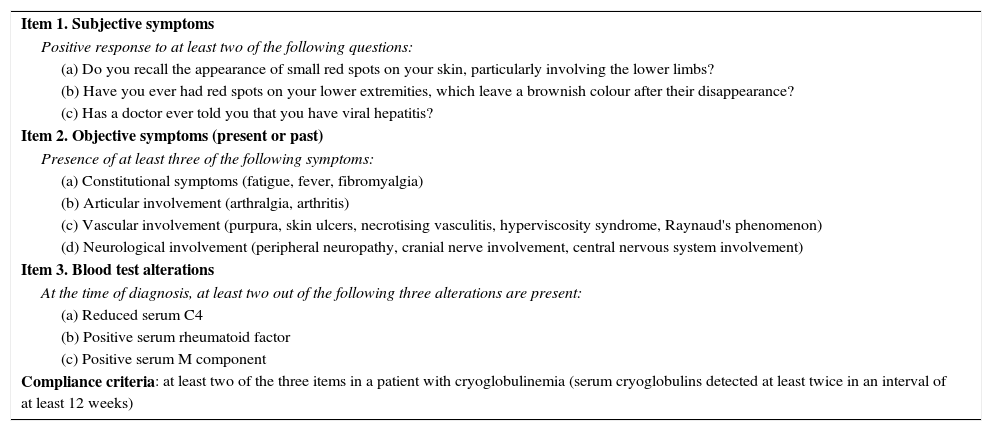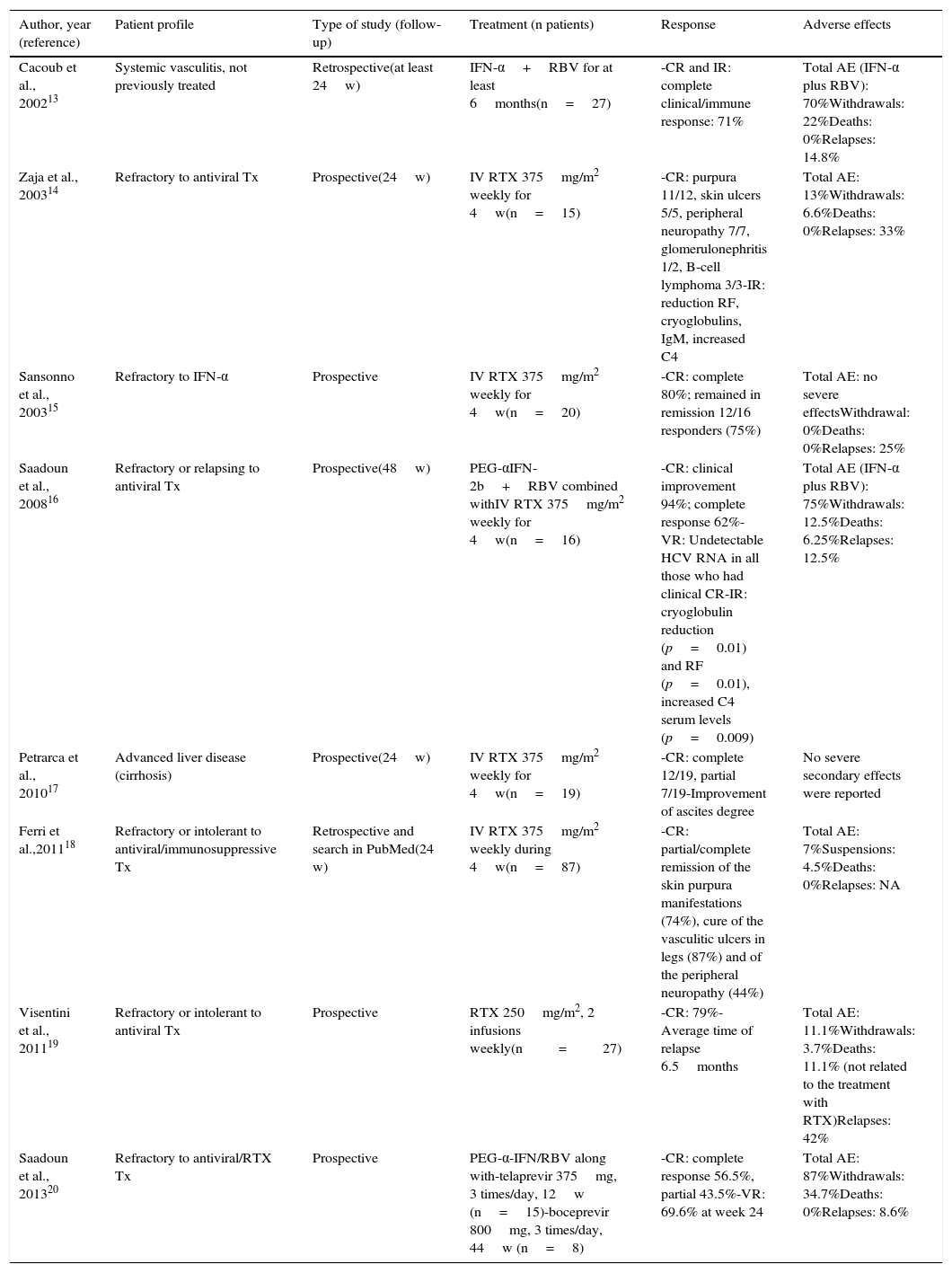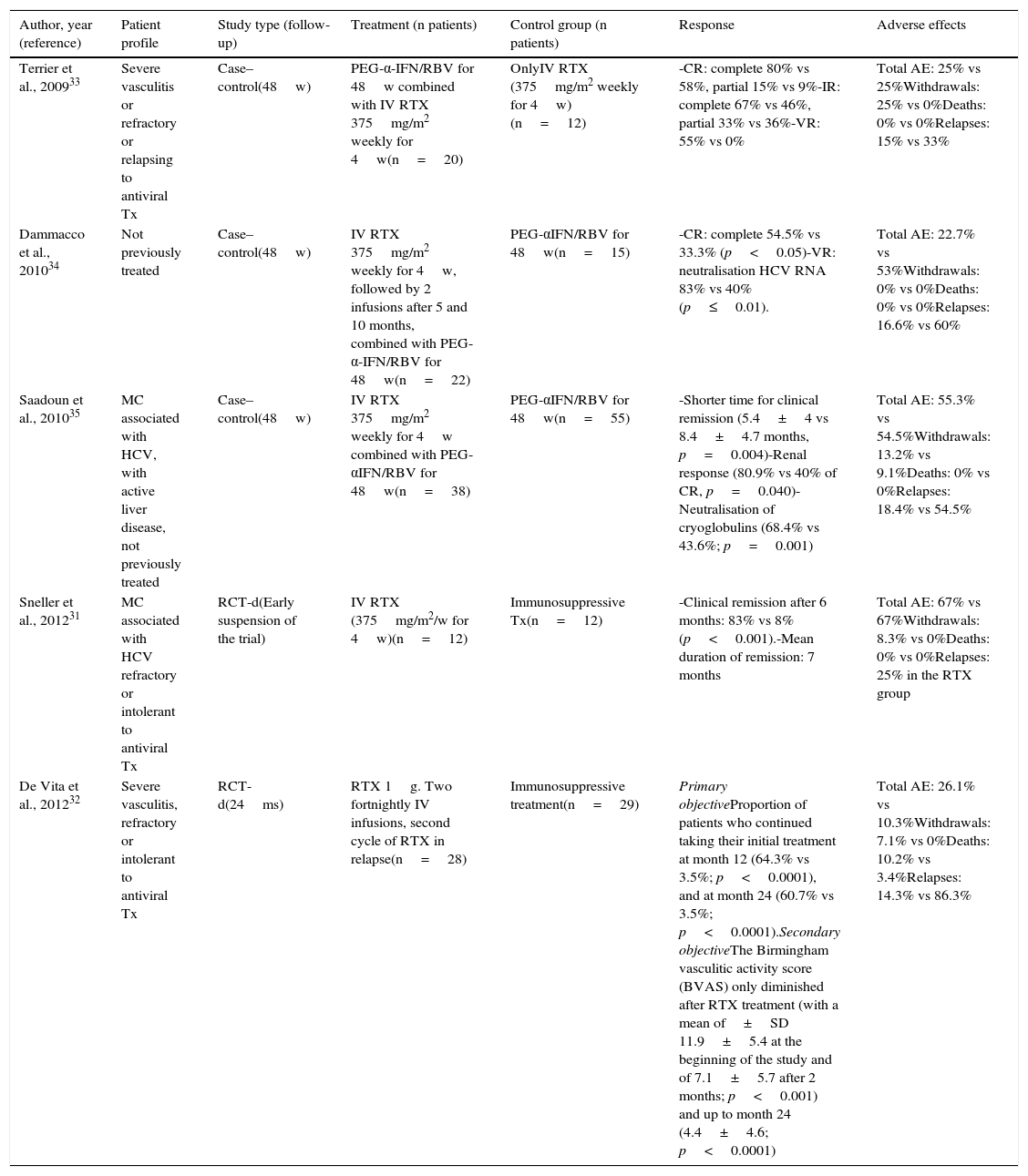Cryoglobulinemia is a heterogeneous systemic autoimmune disease with a wide variety of causes, symptoms and outcomes, and different etiopathogenic pathways involved in the vasculitic organ damage. The discovery of the hepatitis C virus (HCV) in 1989 changed radically the focus of research of the so-called “essential” cryoglobulinemia. Cryoglobulins can be detected in 25–30% of patients with HCV, overwhelmingly representing mixed cryoglobulins. However, only 10–15% of patients present with cryoglobulinemic vasculitis, with a broad spectrum of symptoms including mild or life-threatening manifestations. Consequently, not all patients can be uniformly treated. The key therapeutic points in HCV+ patients with cryoglobulinemic vasculitis cover different aspects. The first is to treat the underlying cause of cryoglobulinemia whenever possible, hence the use of antiviral therapies must always be considered in these patients. An individualised diagnostic approach to assess the number of organs involved and the severity of organ involvement is also essential in the therapeutic planning. This complex clinical scenario leads to an equally complex therapeutic scenario. There are three main treatment strategies for HCV-associated cryoglobulinemic vasculitis: conventional immunosuppression, antiviral treatment and biological therapies. The most recent studies are suggesting a change from the classical therapeutic approach (monotherapeutic regimens) to combination/sequential regimens, including treatments targeting the virus and those directed against the induced autoimmune disease, with the aim of blocking the various etiopathogenic pathways involved.
La crioglobulinemia es una enfermedad autoinmune sistémica heterogénea, ya que incluye una amplia variedad de causas, síntomas y evoluciones, con varias vías etiopatogénicas distintas implicadas en la lesión vasculítica de los principales órganos. El descubrimiento del virus de la hepatitis C (VHC) en 1989 cambió radicalmente el enfoque de investigación de la hasta entonces denominada crioglobulinemia «esencial». Las crioglobulinas se pueden detectar en el 25–30% de los pacientes con VHC; en su gran mayoría, crioglobulinas mixtas. No obstante, solo un 10–15% de los pacientes presentan vasculitis crioglobulinémica, con un amplio espectro de síntomas que incluyen manifestaciones leves o presentaciones potencialmente mortales. En consecuencia, no todos los pacientes pueden ser tratados de forma homogénea. Los puntos terapéuticos clave en el paciente infectado por el VHC con vasculitis crioglobulinémica abarcan distintos aspectos. El primero es tratar la causa subyacente de la crioglobulinemia siempre que sea posible, por lo que el uso de tratamientos antivirales debe plantearse siempre en estos pacientes. El estudio diagnóstico individualizado para evaluar el número de órganos afectados y la gravedad del daño orgánico es esencial en el enfoque de la planificación terapéutica. Este complejo escenario se traduce en un no menos complejo escenario terapéutico. Existen 3 principales estrategias de tratamiento para la crioglobulinemia asociada al VHC: inmunodepresión convencional, tratamiento antiviral y tratamientos biológicos. Los estudios más recientes están mostrando un cambio en el enfoque terapéutico clásico (monoterapia) hacia regímenes combinados y/o secuenciales, incluyendo tanto tratamientos dirigidos contra el virus como aquellos dirigidos contra la enfermedad autoinmune, con el objetivo de bloquear las diferentes vías etiopatogénicas implicadas.











